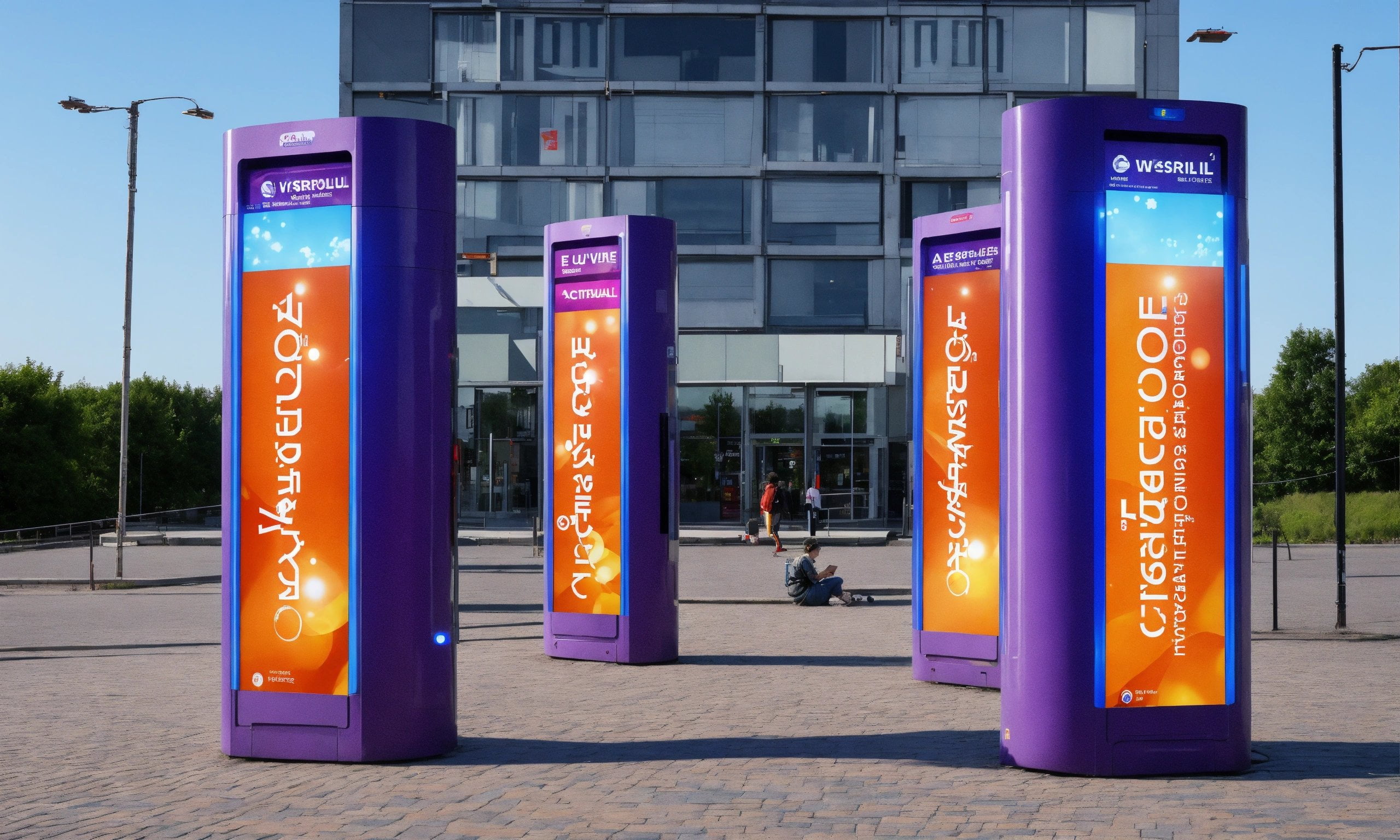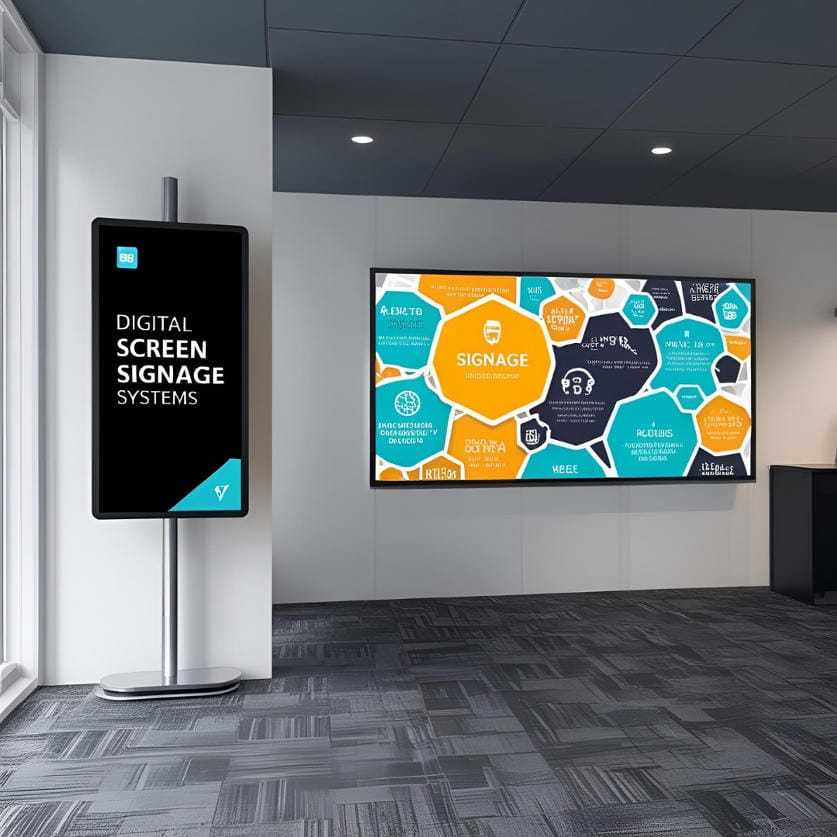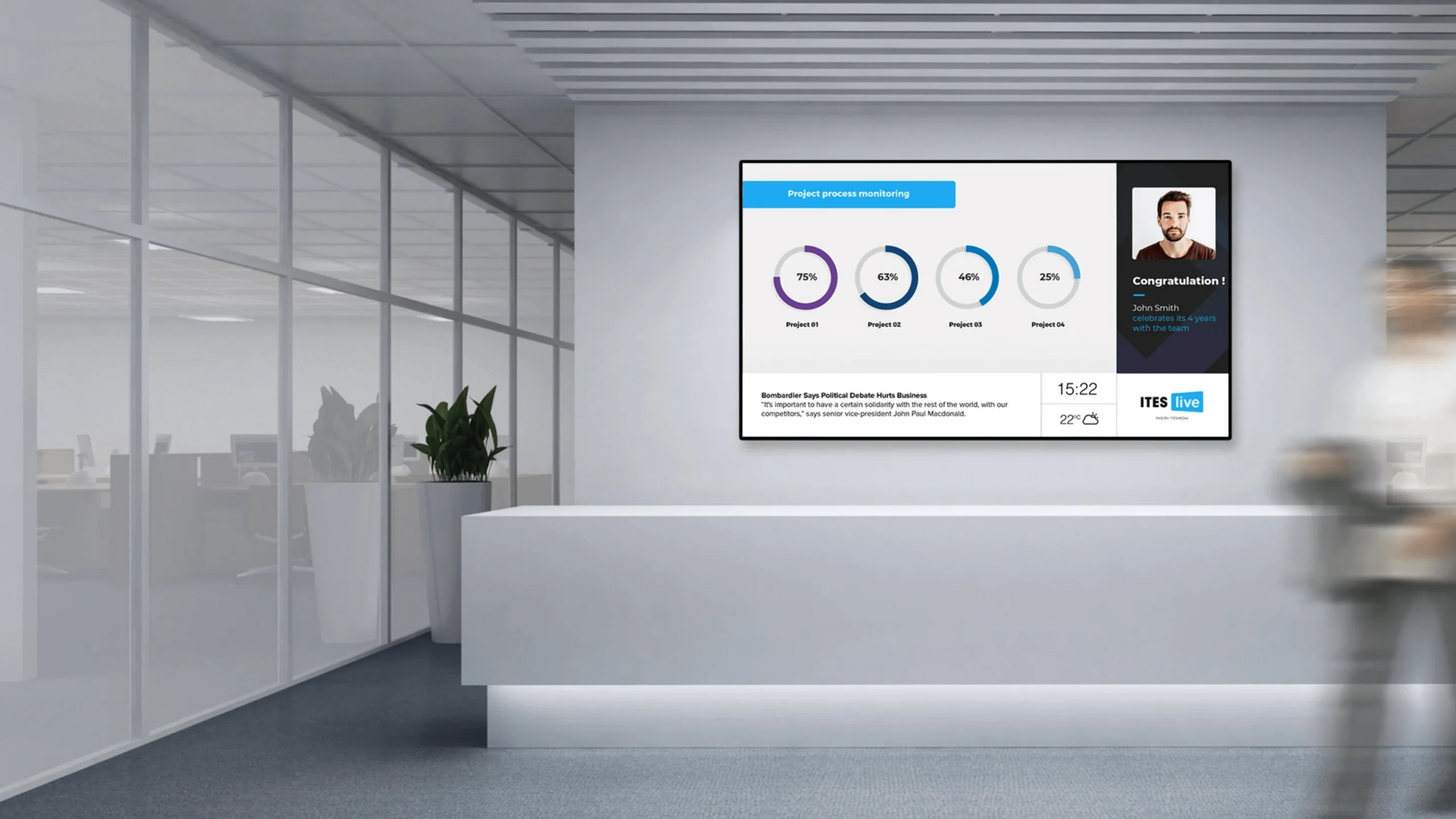1. Introduction to Digital Signage
Digital signage is making a big difference in how businesses interact with their audience. It makes it possible to share content in real time on displays for retail, restaurants, and businesses. A lot of people use commercial systems, but open source digital signage platforms are becoming more popular due to their flexibility, affordability, and a strong community.
2. What is Open Source Digital Signage?
Anyone can access the source code of open-source digital signage software and make changes to it. Unlike closed platforms, open source systems give users the freedom to adapt and change the features and layout to suit their company’s needs. Since they are web-based, they can be managed from any device connected to the internet.
 3. Why Choose Digital Signage Open Source Software?
3. Why Choose Digital Signage Open Source Software?
Customization and Flexibility
Open source software allows you to manage and design its features as you like. Businesses have the freedom to customize the user interface, add extra integrations, and make changes to workflows without being limited by vendors.
Cost-Effectiveness
Because open source platforms are free, companies do not have to pay licensing fees, which cuts down on expenses.
Strong Community Support
Users can make use of group development, regular improvements, and add-ons made by the community to improve the platform.
Transparency and Security
By having the code open, organizations can review security issues and meet required standards.
Independence from Vendor Lock-In
Using open source software, companies are free to choose who they work with or host their own servers.
4. The Business Advantages of Web-Based Open Source Digital Signage
Remote Management
Since signage can be controlled and updated online, multi-site deployments become simpler and more manageable.
Instantaneous Content Updates
Updates can be made live to all displays in a business, ensuring the messages are always up to date.
Device Compatibility
They can be used on screens of all sizes, from small tablets to large 4K displays, opening up various uses.
Browser-Based Interfaces
Users can access the system through a browser, making it easier for IT departments.
Scalability
Whether you have just a few screens or many, open source systems can be scaled out horizontally and managed from a central point.
5. Key Features Found in the Best Open Source Digital Signage Software
Drag-and-Drop Content Editor
With an intuitive editor, people of any skill can make attractive layouts without hassle.
Scheduling and Playlist Management
Scheduling the content ensures that it is displayed at the right times for dayparting and promotional needs.
Multi-Screen and User Support
Many different screens and user permissions can be managed at the same time on an enterprise level.
Content Zone Splitting
Putting videos, images, and text into different areas on the screen makes presentations more engaging.
Media and Integration Support
The platform can stream videos, use HTML5, display RSS feeds, and connect with APIs for different content features.
Remote Monitoring and Reporting
Built-in analytics monitor the performance and status of the content and devices, making it easy for users to manage proactively.
 6. Popular Digital Signage Open Source Free Platforms
6. Popular Digital Signage Open Source Free Platforms
Xibo
A website CMS that can be used online with a drag-and-drop design and supports all main operating systems. A good community helps to keep things improving over time.
Screenly OSE
With a small footprint, it’s great for small companies or DIY enthusiasts on a Raspberry Pi.
Concerto
It is intended for use by schools and nonprofits and allows RSS feeds and straightforward media playback.
DAKboard
Mostly known for calendar, weather, and photo displays, and compatible with Raspberry Pi for home use.
LibreSignage
A simple solution that can be deployed online for simple digital signage tasks.
7. How Open Source Signage Encourages Customization and Innovation
Branding and Interface Control
Firms can add their own logo, colors, and easy-to-use interfaces that match their brand.
Proprietary Integrations
Being able to link internal databases or special algorithms improves how the system functions.
UI Customization for All Users
If the interface is simpler, it can be more accessible for non-technical staff and help improve usability.
Automation via Scripts
Updating content can be done automatically using scripts or webhooks, saving time for manual work.
8. Cost Efficiency and Scalability
Zero Licensing Fees
Using open source software means you don’t need to pay for an annual license, saving a lot of money compared to proprietary software.
Hardware Freedom
Raspberry Pi and similar low-cost devices allow users to avoid being stuck with just one vendor.
Community-Based Support
Being able to use community forums saves money on premium support.
Scalable Architecture
It’s easy to start with a few screens and users and add more as your network grows.
9. Comparing Open Source vs Proprietary Digital Signage Solutions
| Feature | Open Source | Proprietary |
| Cost | Usually free | Subscription-based |
| Customization | Full access to source code | Limited by vendor |
| Support | Community-driven | Dedicated paid teams |
| Security | Transparent and auditable | Closed, trust-based |
| Scalability | Flexible, DIY approach | Turnkey, sometimes limited |
| Ease of Setup | Requires technical expertise | Often plug-and-play |
Choosing between them depends on your budget, IT capabilities, and need for control.
10. Ideal Use Cases for Web-Based Digital Signage Open Source Tools
Educational Institutions
Concerto is used to announce events, provide class schedules, and make emergency alerts.
Retail Stores
Share product promotions, manage live sales, and link to POS details to send customized messages in each location.
Restaurants
Show menus, provide pick-up details, and share promotions all from a distance using a remote system.
Office Buildings
Share information about meeting rooms, employee changes, and greet visitors in a quick and efficient way.
Nonprofit Organizations
Offer digital communication solutions at a low cost and with the support of the community.
 11. Security, Support, and Community Contributions
11. Security, Support, and Community Contributions
Security Transparency
Because the code is open source, it can be reviewed to verify that it meets security and compliance rules, and any vulnerabilities can be fixed quickly by the community.
Support Models
While there are no official support teams for open source, people in forums and user groups are always ready to help. There are also commercial services for well-known platforms.
Collaborative Development
Development and bug fixing are often faster with community support than with those developed in-house.
12. Guidelines for Setting up Open Source Digital Signage Solutions
Define Clear Goals
Define the content and your target audience before deciding on which platform to use.
Evaluate Hardware Compatibility
You can use a Raspberry Pi, an Android box, or a commercial media player based on your setup.
Pilot Before Scaling
Check on one screen to make sure everything is working properly before putting the updates into full use.
Use Reusable Templates
Make use of templates to maintain consistent branding and find updates quicker.
Ensure Network Reliability
For cloud-based digital signage systems, you need a strong and reliable internet connection.
Document the Setup
Keep records internally to help with solving problems and introducing new team members.
Engage with Communities
Keep an eye on GitHub, Reddit, or vendor forums to find the latest info and support.
13. Real-World Success Stories of Businesses Using Open Source Digital Signage
Retail Chain in Canada
By using Xibo and Raspberry Pi, a Canadian retailer with several stores saved more than $50,000 in the first year and gained full control over their content.
University in Europe
Concerto was set up by a European university, connecting it with class timetables and emergency updates for the benefit of everyone on campus.
Restaurant Group in the US
Screenly OSE was used by a restaurant group to update menus and offer better service to customers.
14. FAQs
Is digital signage open source software truly free?
Most of the time, you can use open-source platforms for free, even though you might still need to pay for hosting, hardware, or personalization.
What is the best open source digital signage software?
Some of the most popular ones are Xibo, Screenly OSE, Concerto, and LibreSignage. It depends on what your business needs are.
Can I use open source digital signage on any screen?
Yes, as long as you have a Raspberry Pi or your PC is running Linux/Windows.
How secure is open source digital signage?
Open source is known for being highly secure because everything is open and people can check the code, but its security still depends on how it is configured.
Do I need coding skills to use open source digital signage?
Basic usage requires no coding; Having programming skills can help you customize an AI more fully.
Is open source better than proprietary signage?
You can customize open source and save money, but you may need IT staff to do it.
Can I manage multiple locations with open source signage?
It is possible to find platforms that allow you to manage everything from one place.


 3. Why Choose Digital Signage Open Source Software?
3. Why Choose Digital Signage Open Source Software? 6. Popular Digital Signage Open Source Free Platforms
6. Popular Digital Signage Open Source Free Platforms 11. Security, Support, and Community Contributions
11. Security, Support, and Community Contributions


